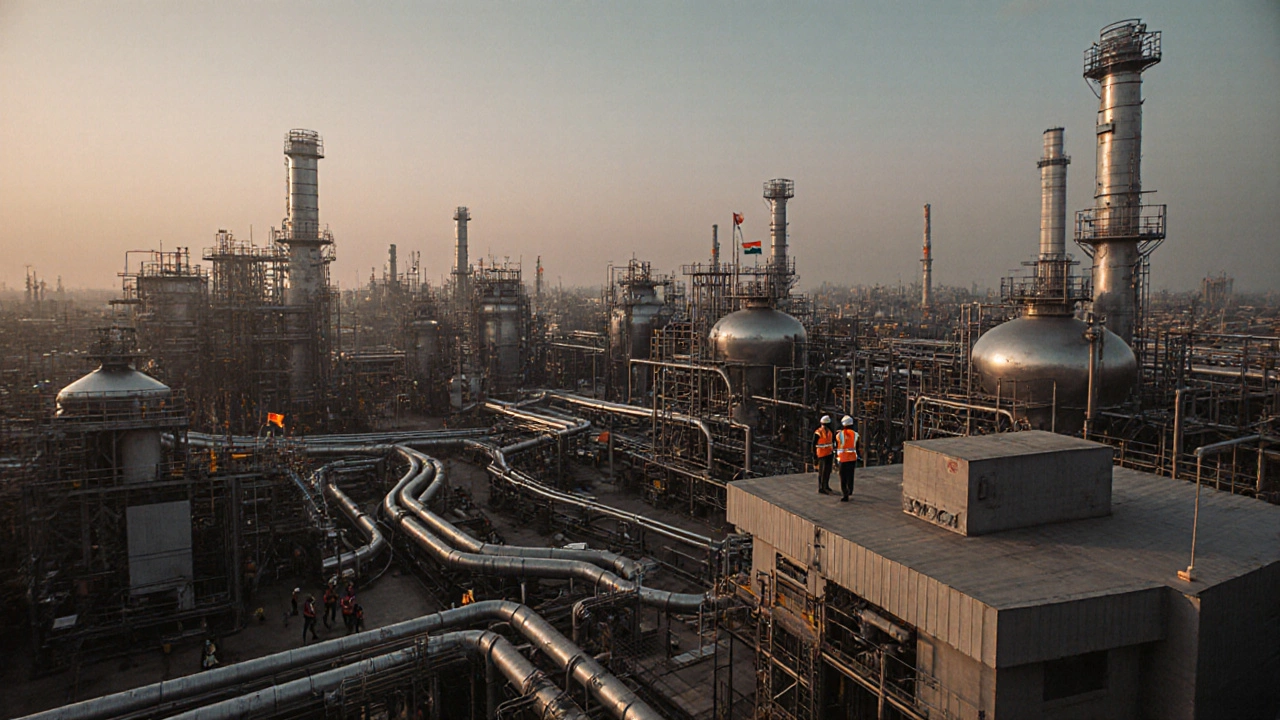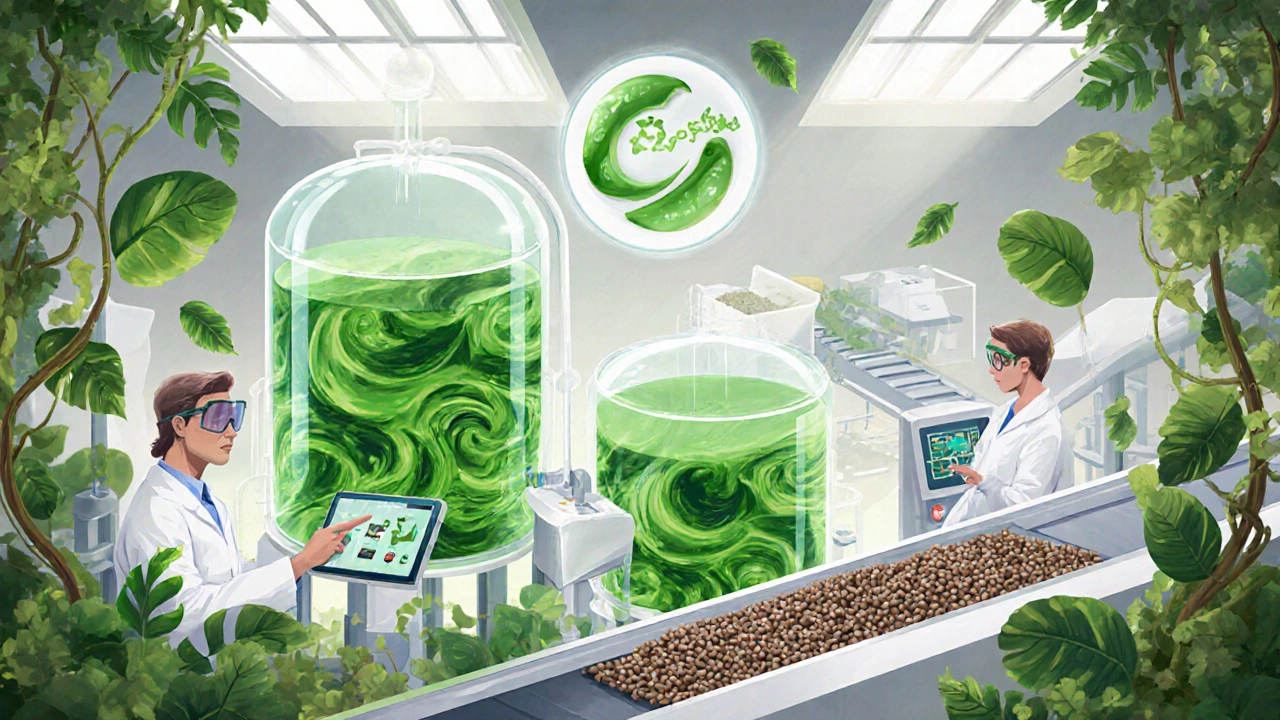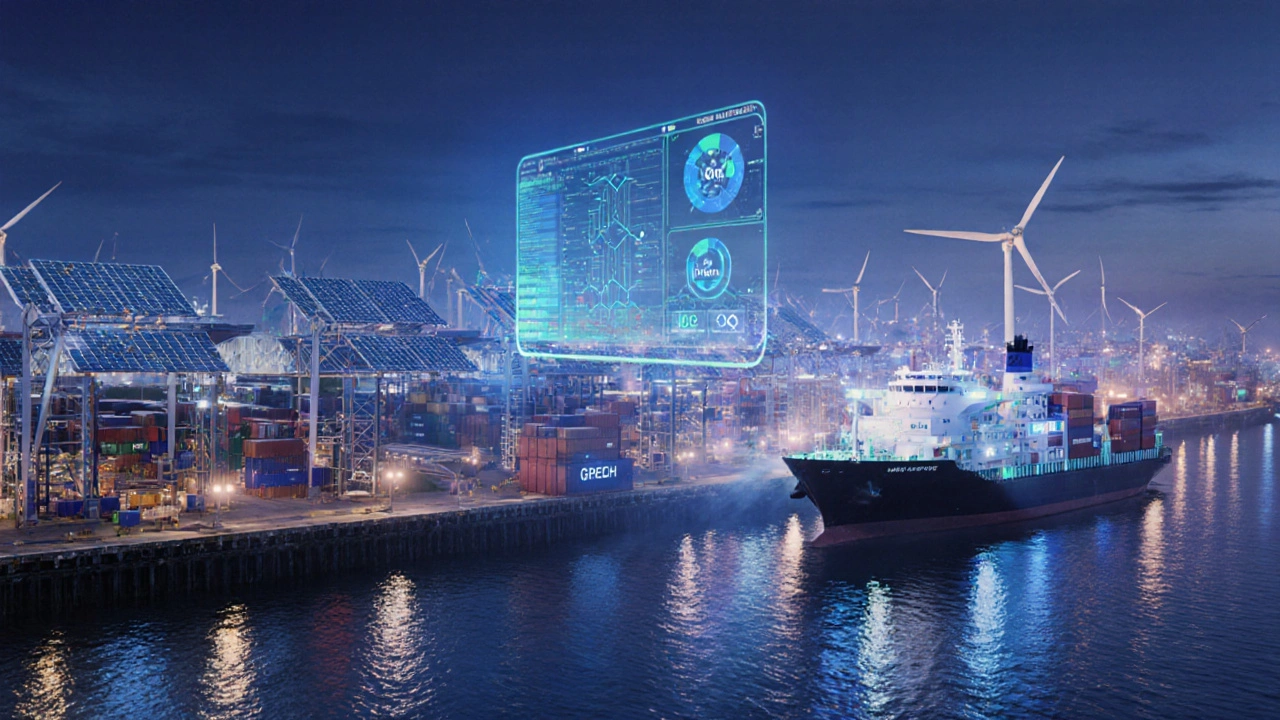 Oct, 12 2025
Oct, 12 2025
Chemical Market Growth Estimator
Estimate India's chemical market size by 2035 based on current values and growth rates. The industry currently contributes 7% to GDP and employs over 3 million workers.
India's chemical industry is a fast‑growing segment of the national economy that contributes roughly 7% to the GDP and employs over 3million workers. With rising demand for plastics, fertilizers, and high‑performance materials, the sector is at a crossroads between traditional petrochemical pathways and a new wave of sustainability‑driven chemistry. If you’re wondering whether the next decade will bring more factories, greener labs, or both, you’re in the right place. Below we unpack the forces shaping the industry, the segments that will lead the charge, and how policymakers and investors can stay ahead of the curve.
Current Landscape: Numbers that tell the story
In FY‑2024 the Indian chemical market crossed the $190billion mark, making it the third‑largest in Asia after China and Japan. Export value hit $69billion, while imports lingered around $34billion, giving the sector a healthy trade surplus. The Petrochemical sector covers bulk chemicals like ethylene, propylene, and benzene that feed plastics and fibers accounts for about 45% of total output, but growth is slowing to 4-5% CAGR as global oil prices fluctuate.
By contrast, the Specialty chemicals include high‑value products such as pigments, agro‑chemicals, and performance polymers are expanding at 9-10% CAGR, driven by demand from automotive, electronics, and renewable‑energy sectors. This divergence hints at where future investment will flow.
Key Growth Drivers
- Urbanization: By 2035, over 40% of India’s population will live in cities, boosting construction, automotive, and consumer‑goods demand.
- MakeinIndia: The government’s flagship program offers fiscal incentives, simplified licensing, and a <$5billion fund for chemical parks.
- Digitalization: Advanced process analytics and AI‑driven optimization are cutting energy use by up to 15% in pilot plants.
- Export push: New trade agreements with the EU and ASEAN open premium markets for high‑purity specialty chemicals.
These trends are reinforced by a growing middle class that spends more on cosmetics, personal‑care, and packaged foods-each relying on specialty ingredients.
Emerging Segments: From petro‑ to green‑chemistry
The sector is gradually shifting from heavy‑oil feedstocks to bio‑based and circular models. Three sub‑segments stand out:
- Bio‑based polymers: Companies like BASF India has launched a plant‑based polyamide line that reduces CO₂ emissions by 30% are scaling up production of biodegradable plastics.
- Green chemistry focuses on designing processes that minimize waste and hazardous reagents: the National Chemical Laboratory (NCL) runs a $120million center for catalysis research, producing recyclable solvents for pharma firms.
- Advanced materials: High‑performance polymers for electric‑vehicle batteries and aerospace are attracting $2billion in venture capital since 2022.
These areas are not isolated; they intersect with renewable‑energy goals and the push for a circular economy.

Government Policies and Initiatives
Since 2020, the Ministry of Chemicals and Fertilizers has rolled out three major schemes:
- Chemical Parks Incentive Scheme (CPIS): 15% capital subsidy for setting up integrated parks with common utilities and waste‑treatment facilities.
- National Bio‑Based Plastics Mission (NBPM): targets 25% of plastic demand from bio‑based sources by 2030.
- Zero‑Liquid Discharge (ZLD) Promotion: grants tax rebates to firms adopting closed‑loop water systems.
These policies are backed by a Government of India which has pledged $10billion for clean‑tech upgrades in the chemical sector under the National Clean Energy Fund. The framework reduces regulatory lag and creates a predictable environment for foreign direct investment.
Investment Landscape and Infrastructure Gaps
Foreign direct investment (FDI) in chemicals rose to $2.8billion in FY‑2024, with major players from Europe, the US, and the Middle East establishing joint ventures. The average plant size is expanding from 50kt to 120kt per annum, reflecting economies of scale.
However, infrastructure bottlenecks remain:
- Logistics: Limited rail connectivity to inland chemical parks adds 8-12% to transport costs.
- Power: Reliance on coal‑based grids raises operating expenses; renewable‑energy integration is still under 20% for most plants.
- Talent: A skills gap in process‑engineer training slows adoption of advanced manufacturing techniques.
Addressing these gaps will be crucial to sustain the projected 8% CAGR for the sector as a whole.
Challenges and Risks
Despite optimism, the industry faces several headwinds:
- Feedstock volatility: Global oil price swings can erode margins for petrochemical producers.
- Environmental compliance: Stricter emission standards may require retrofits costing $500million per large plant.
- Geopolitical tensions: Export restrictions on key raw materials like chlorine could disrupt supply chains.
- Competitive pressure: China’s low‑cost base still dominates bulk chemicals; Indian firms must differentiate through value‑added products.
Proactive risk‑management-such as diversifying feedstock sources and investing in digital twins-can mitigate many of these concerns.

Future Outlook: 2025‑2035 Forecast
Analysts at the Indian Institute of Chemical Technology project the market to reach $300billion by 2035, with specialty chemicals accounting for 55% of total value. The India chemical industry will likely see three pivotal shifts:
- From volume to value: Companies will prioritize high‑margin specialty and performance chemicals over bulk petrochemicals.
- From linear to circular: Waste‑to‑value initiatives, such as converting plastic scrap into monomers, will become standard practice.
- From domestic to global: Export‑oriented clusters in Gujarat and TamilNadu will tap into EU green‑product standards, opening premium market segments.
Investors who back green‑chemistry platforms, advanced material R&D, and integrated logistics hubs stand to reap the biggest returns.
Actionable Steps for Stakeholders
Whether you’re a manufacturer, investor, or policy analyst, here are practical moves to future‑proof your involvement:
- Adopt circular‑process design: Conduct material‑flow audits to identify waste streams that can be recycled internally.
- Leverage government incentives: Apply for CPIS subsidies early; align projects with NBPM targets to qualify for extra grants.
- Invest in talent pipelines: Partner with institutions like the National Chemical Laboratory for joint training programs in catalysis and process automation.
- Embrace digital tools: Deploy AI‑based predictive maintenance to cut downtime by up to 20% and lower energy footprints.
- Explore export niches: Focus on high‑purity specialty chemicals that meet EU REACH standards; use trade‑promotion agencies for market entry.
By aligning with these strategies, participants can ride the growth wave while contributing to a greener, more resilient industry.
| Segment | CAGR (2020‑2025) | CAGR (2025‑2035) | Key Drivers |
|---|---|---|---|
| Petrochemical | 4.2% | 3.5% | Oil price volatility, demand for basic plastics |
| Specialty Chemicals | 9.1% | 10.4% | Automotive & electronics, green chemistry, export markets |
Frequently Asked Questions
What are the main factors driving growth in India’s chemical sector?
Urbanization, the MakeinIndia programme, digitalisation of plants, and a strong push for exports are the key pillars behind the sector’s expansion.
How important is green chemistry for the future?
Extremely important - it reduces waste, meets tighter environmental norms, and opens access to premium international markets that demand sustainable sourcing.
Which Indian states are leading chemical park development?
Gujarat, TamilNadu, and Maharashtra host the majority of large‑scale chemical parks, thanks to coastal access and strong logistics networks.
What risks should investors watch for?
Feedstock price swings, tightening environmental regulations, and competition from low‑cost exporters are the top concerns that can affect returns.
How can companies tap into government incentives?
By aligning projects with the Chemical Parks Incentive Scheme and the National Bio‑Based Plastics Mission, firms can claim capital subsidies, tax rebates, and access to dedicated funding pools.